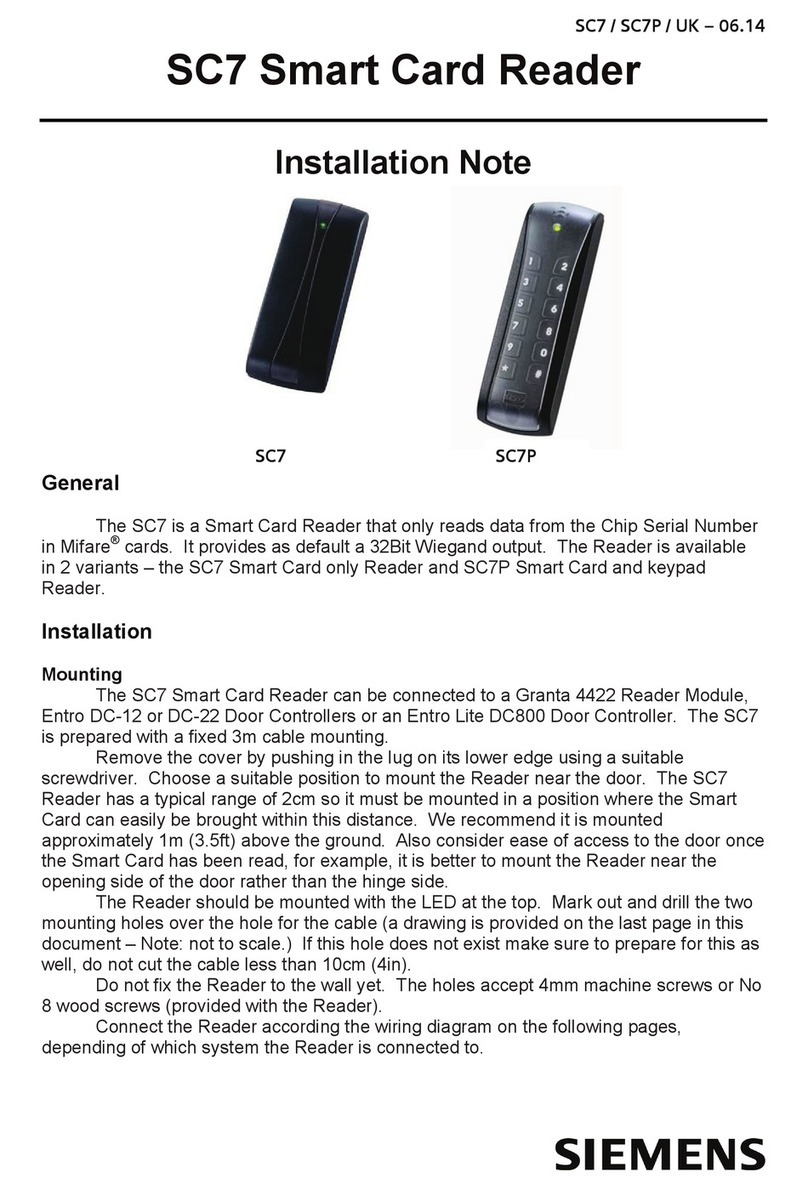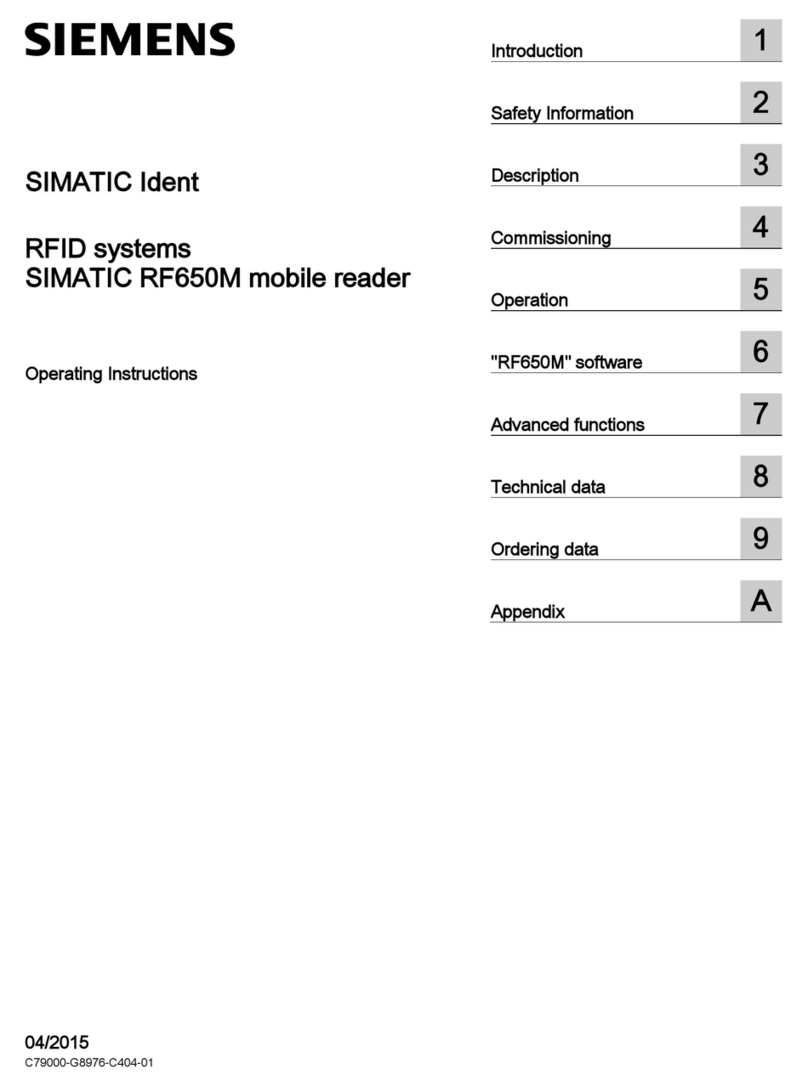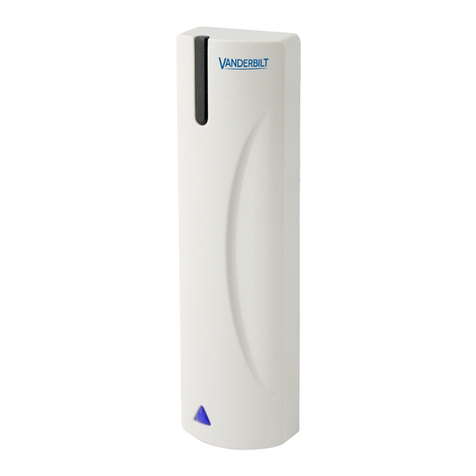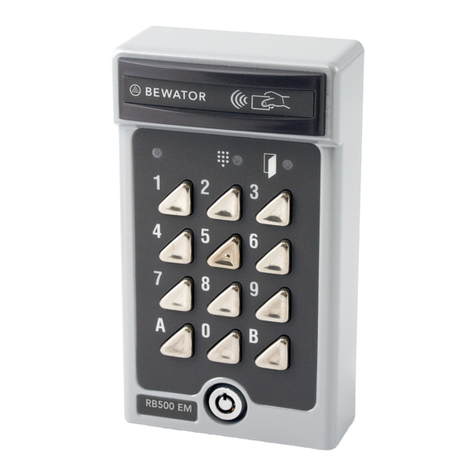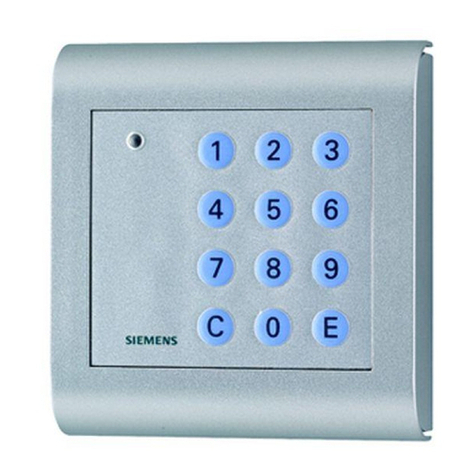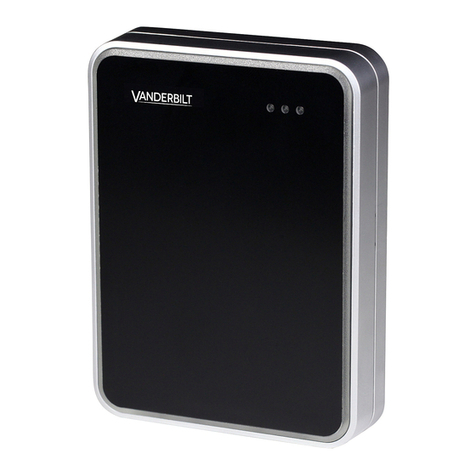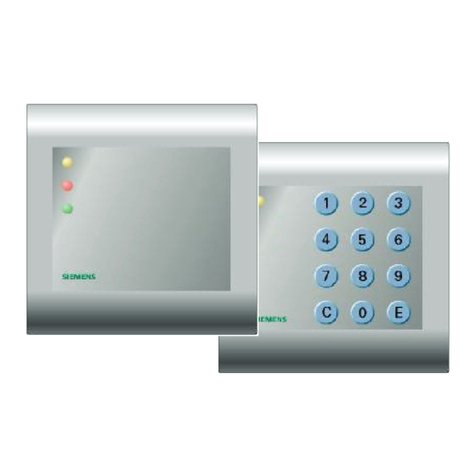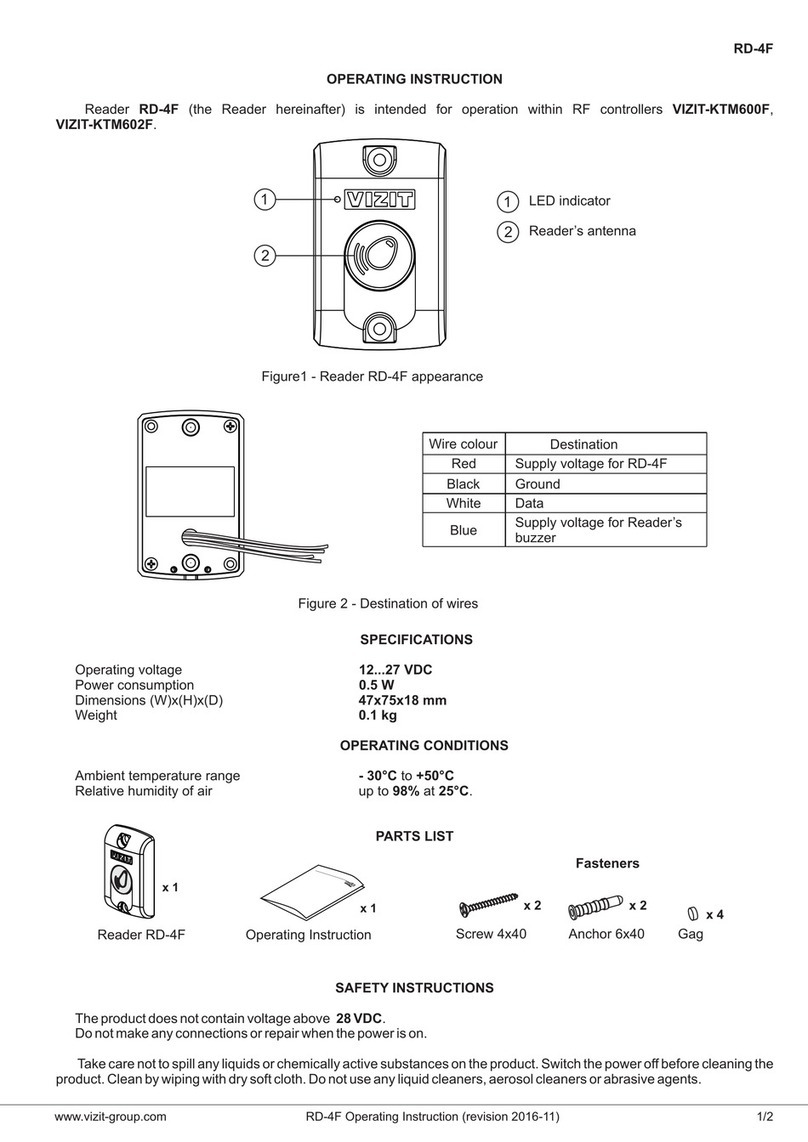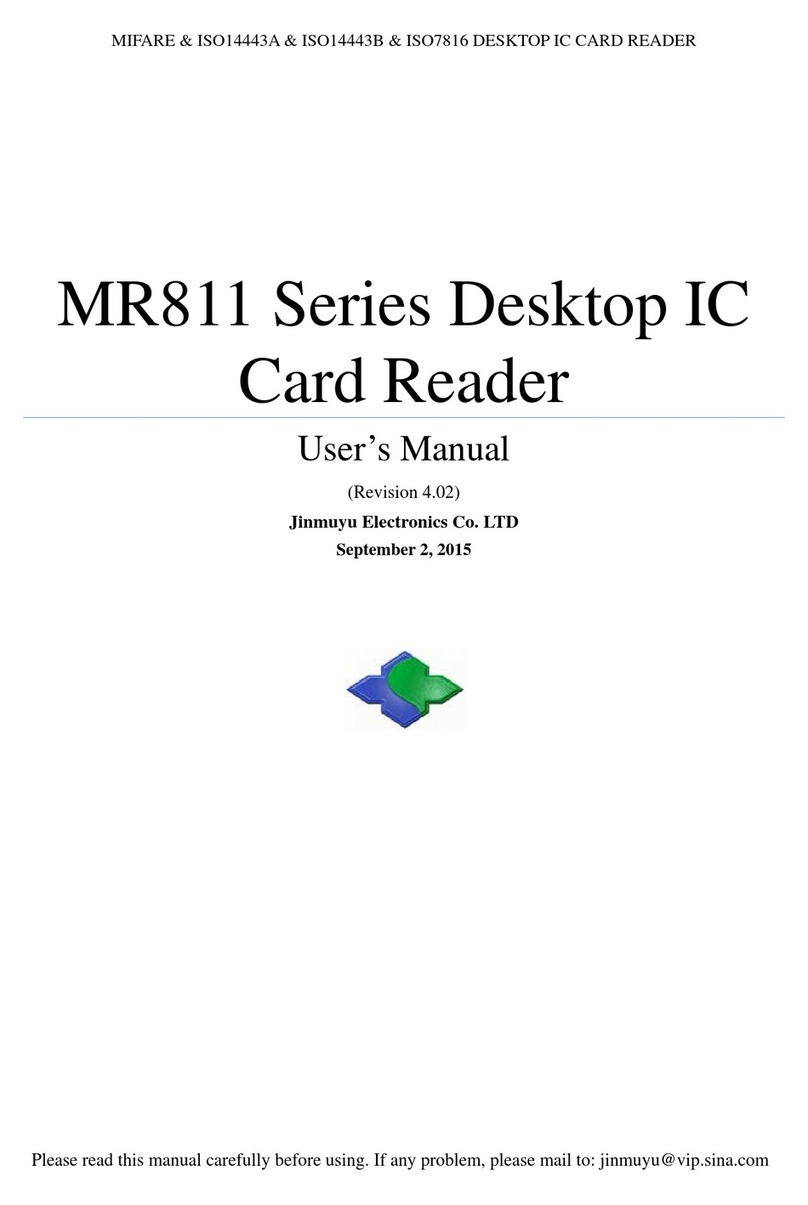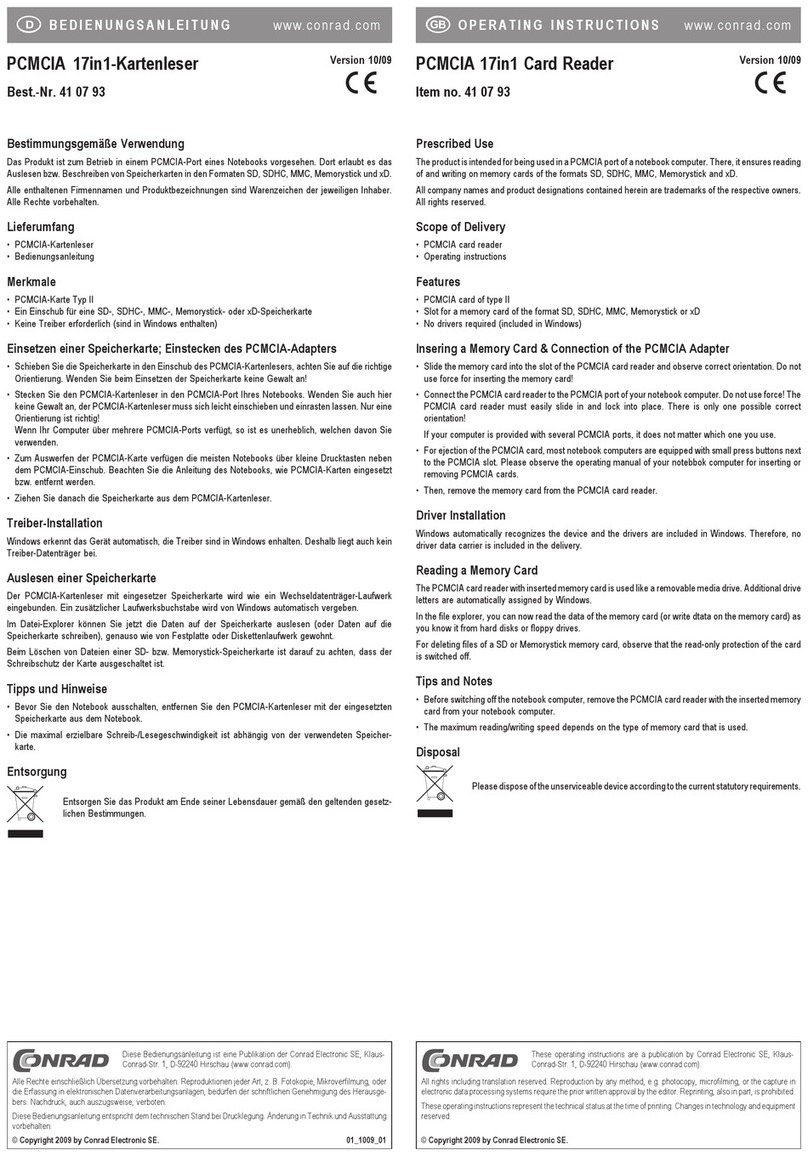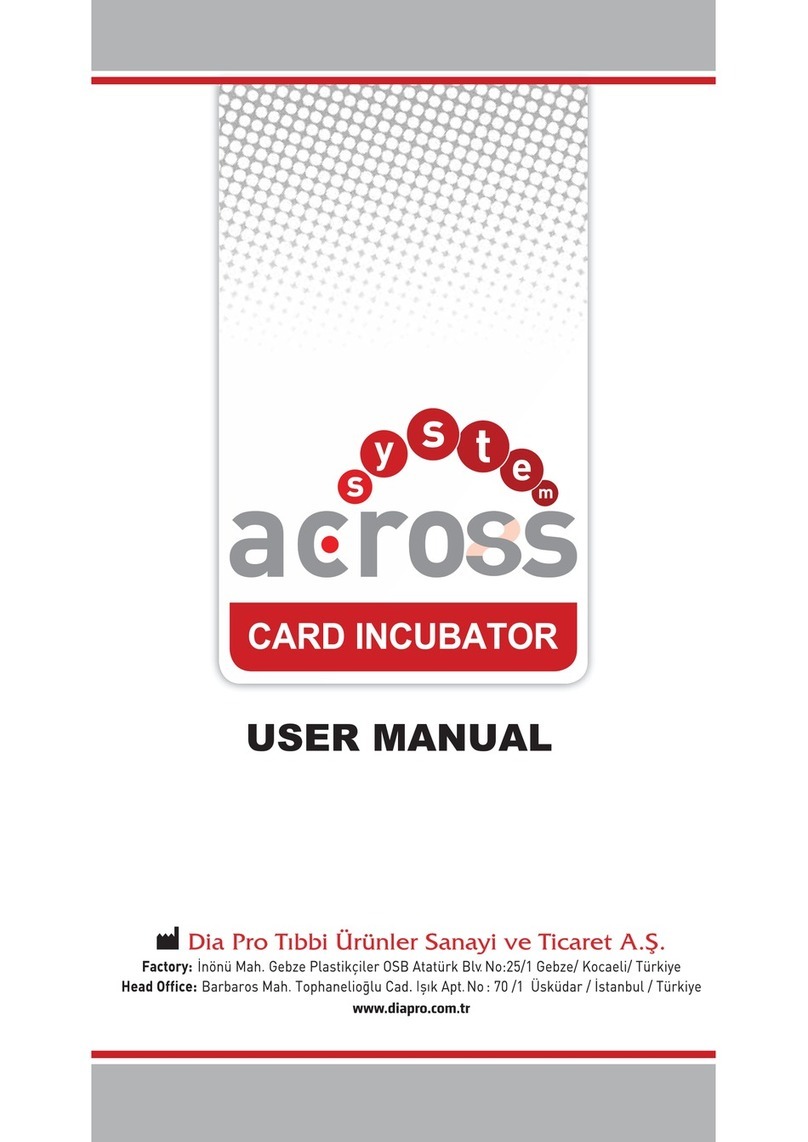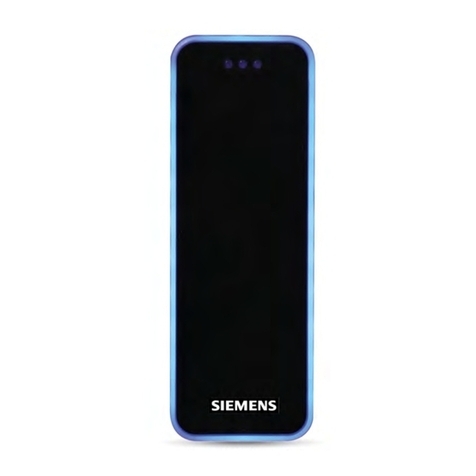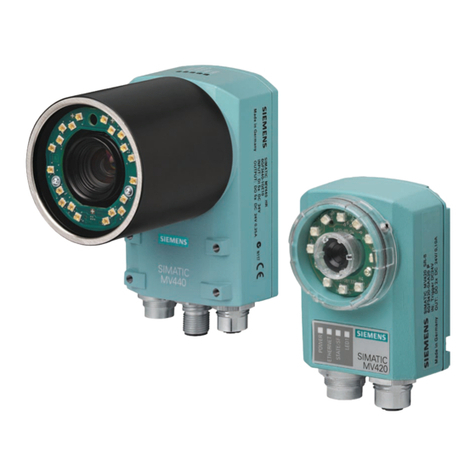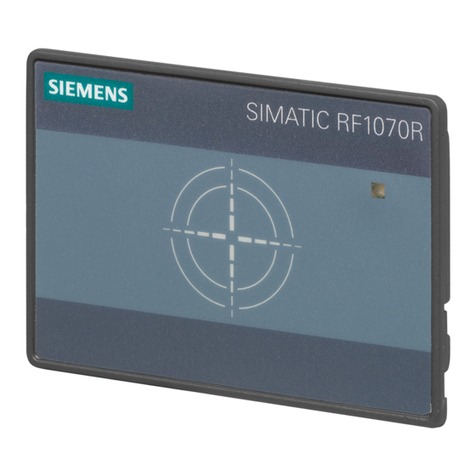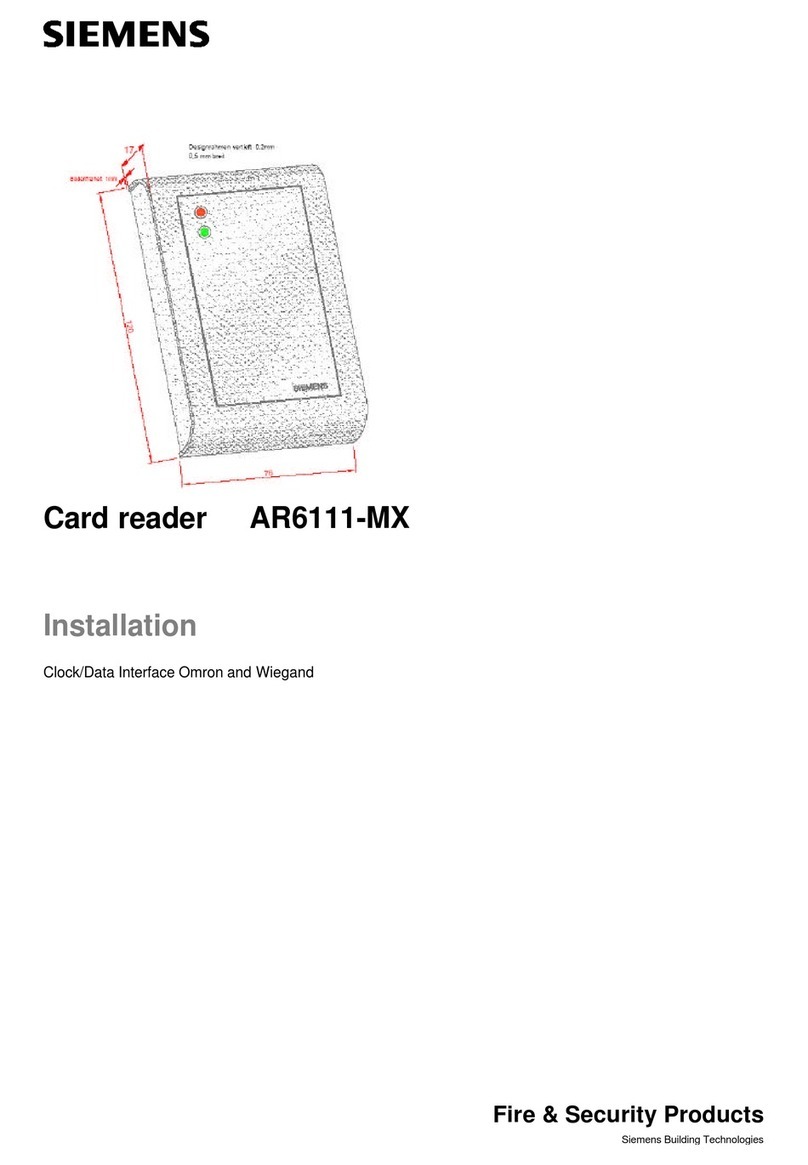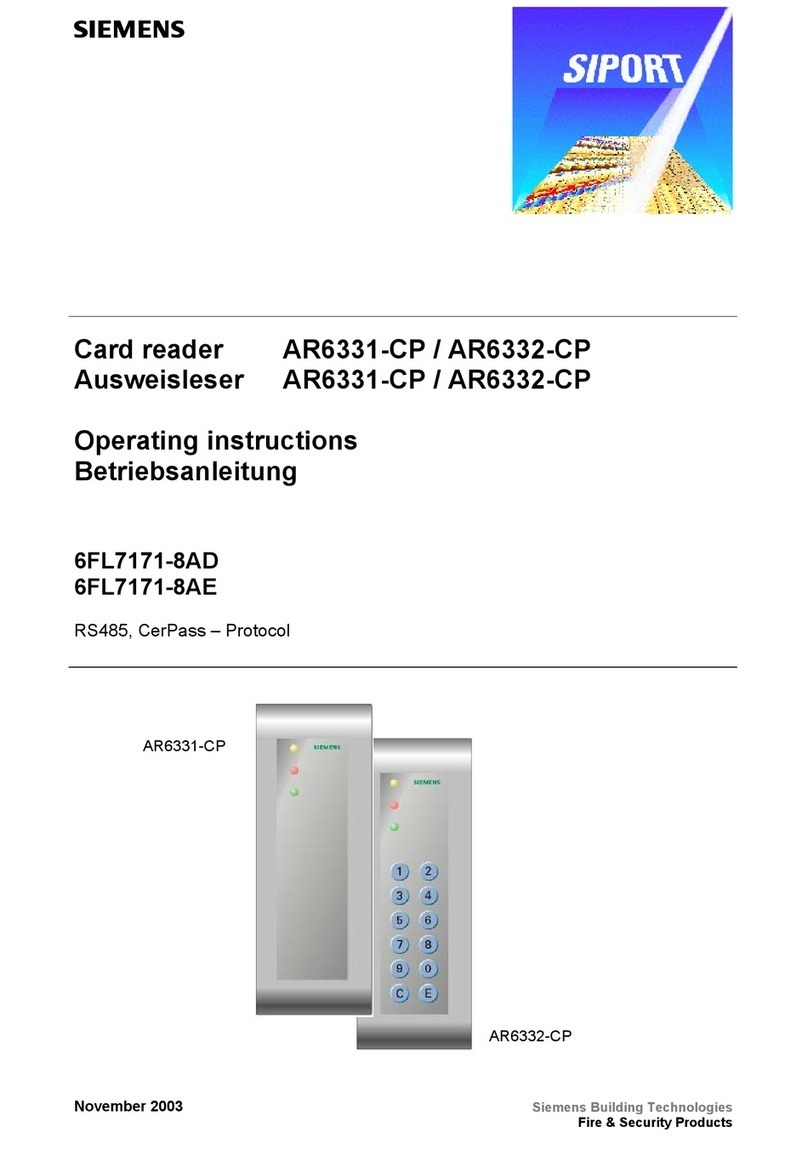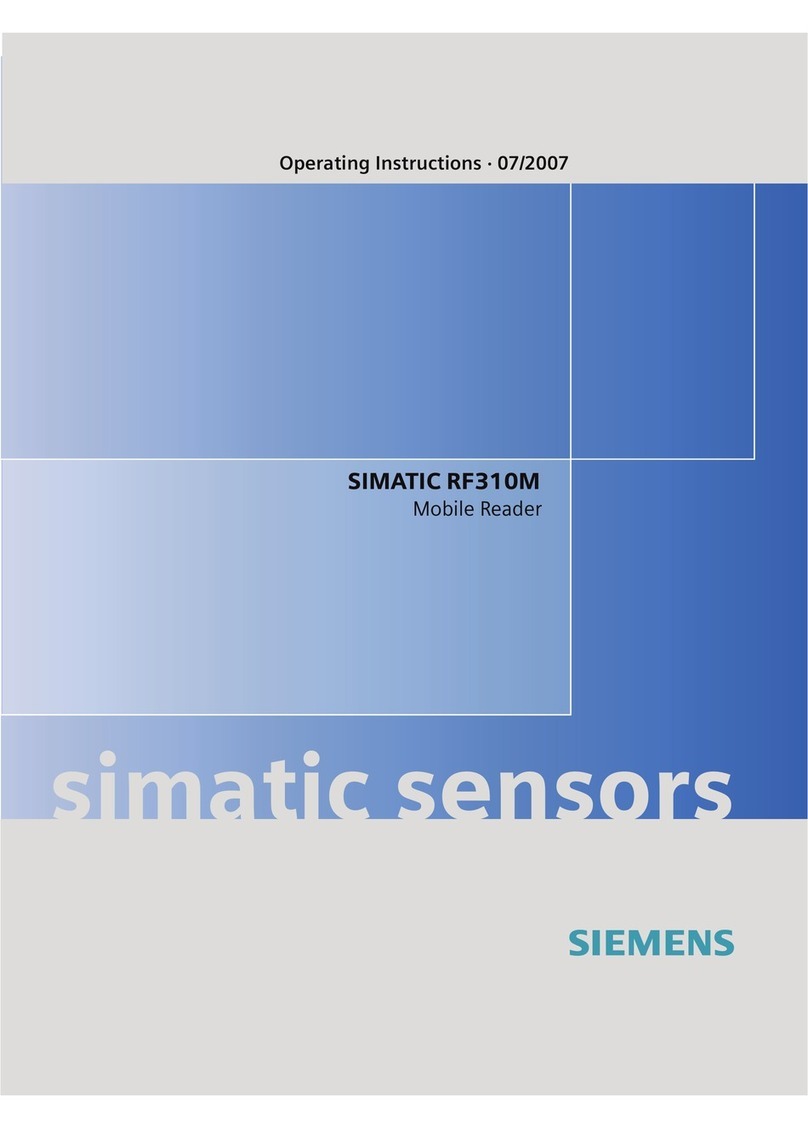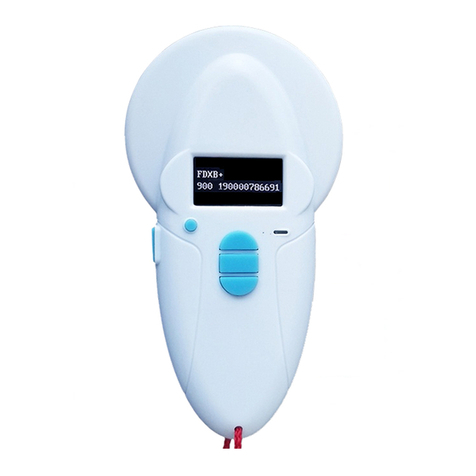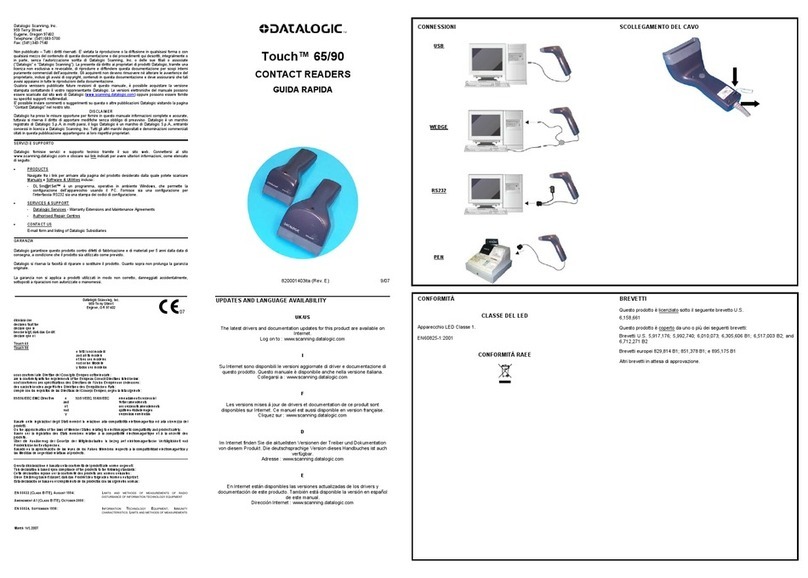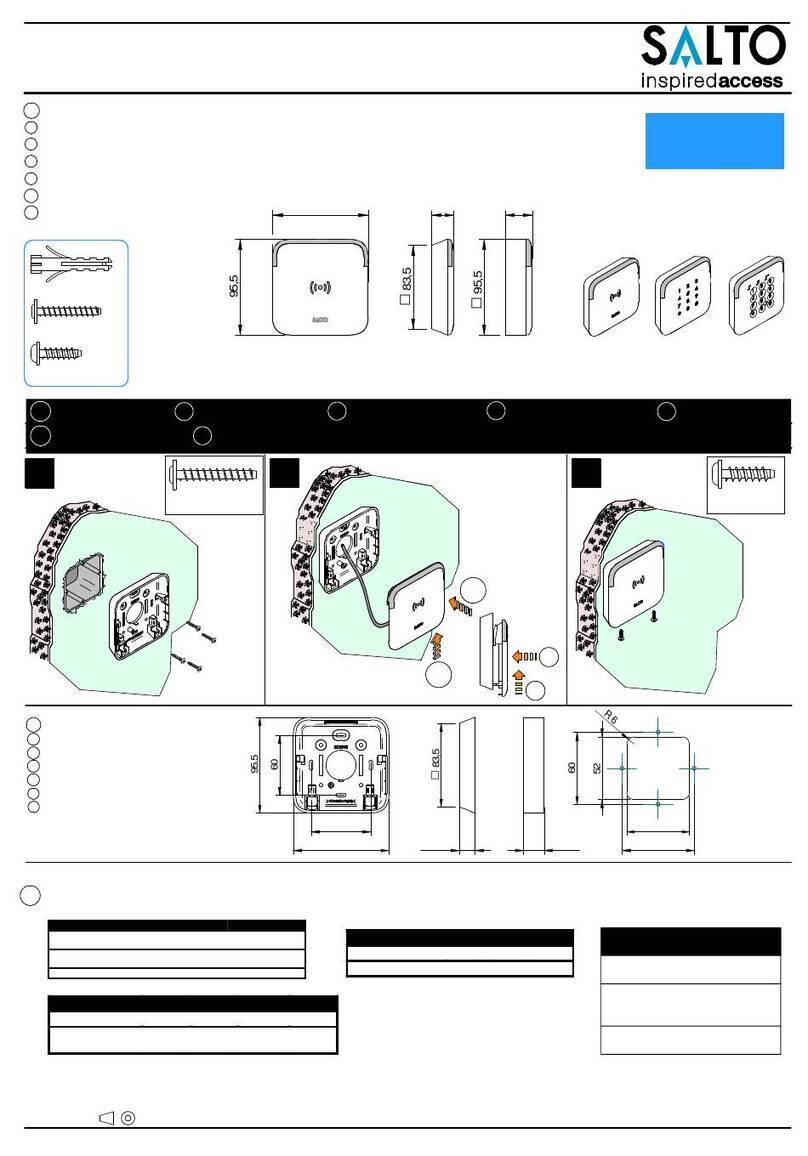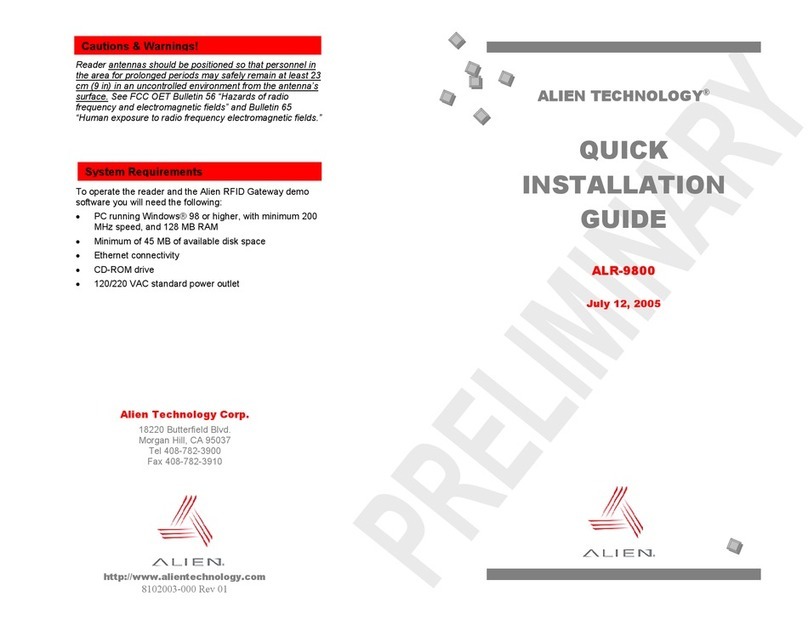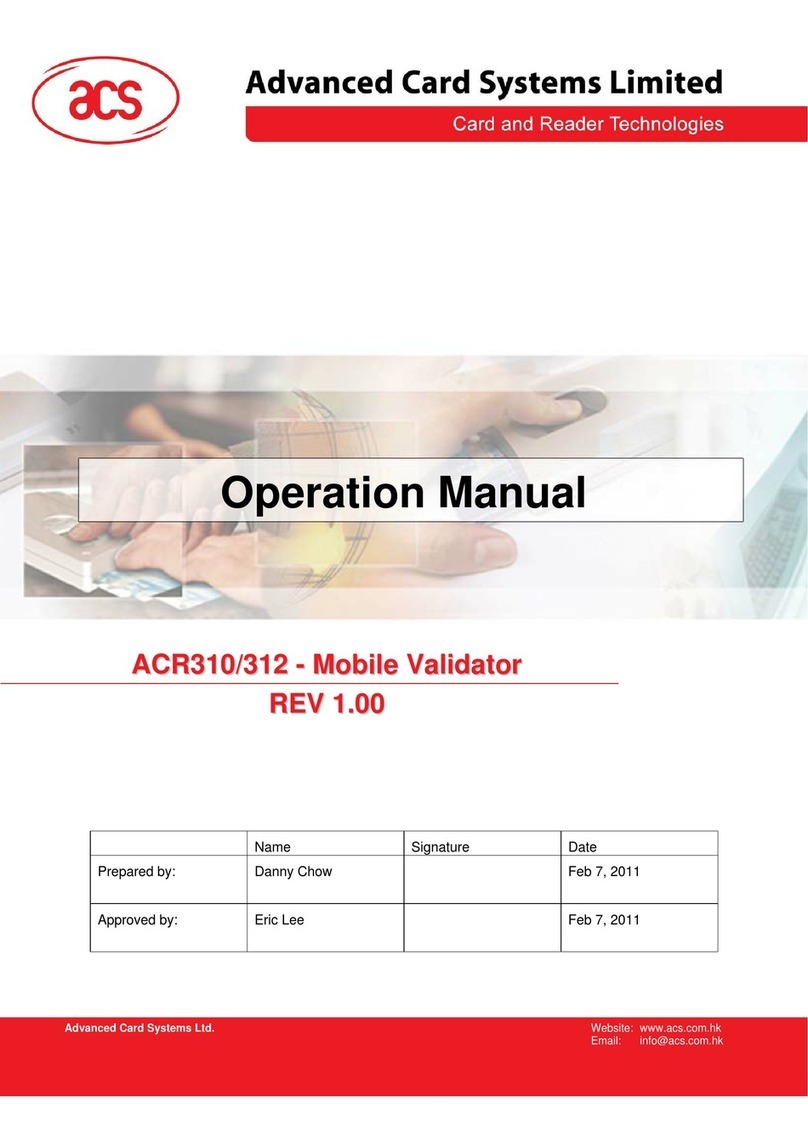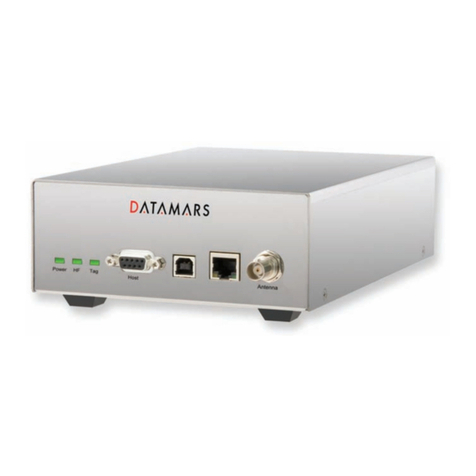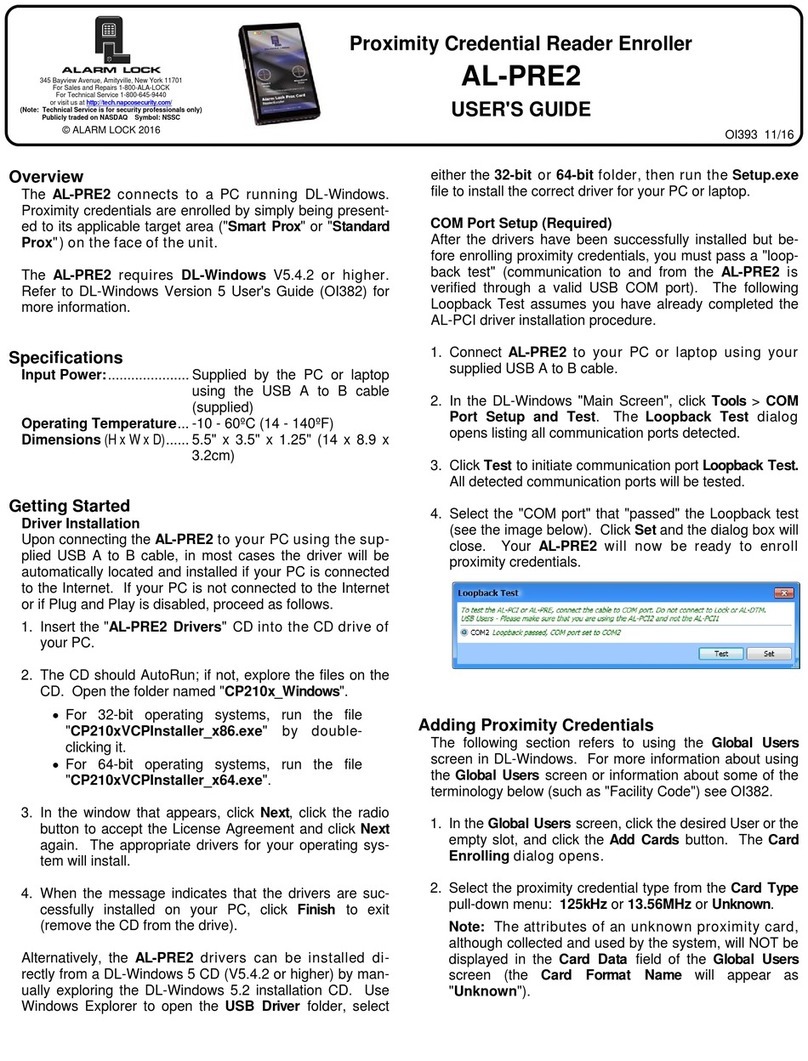FRANÇAIS – Lecteur de cartes PM500
6
Siemens AB 03.2011
Description
Ce document s'applique pour les gammes Siemens
et Bewator.
Le lecteur PM500 est compatible avec les systèmes
SiPass/Bewator Entro, á Bewator Omnis 2010, á
DC800 ou á SiPass integrated. Le lecteur PM500 se
monte à l’aide de quatre vis sur un panneau en
plastique ou en tôle. Le lecteur est compatible avec
les cartes et badges Cotag actifs et passifs.
Remarque! PM500-Cotag et PM500-EM utilisent
des modèles de cartes/badges différents.
Le lecteur de proximité PM500 permet de lire sans
contact les cartes et badges. Il émet un signal radio
continu de basse fréquence. Lorsqu'une carte ou un
tag se trouve dans le champ d'activité du lecteur, il
envoie au lecteur un code d'identification personnel.
À son tour, le lecteur transmet le code à l’unité de
contrôle connectée au système SiPass/Bewator
Entro, Bewator Omnis 2010, á DC800 ou á SiPass
integrated.
Voir Illustration 1 page 10
Sécurité
Consignes de sécurité générales
Lisez les consignes de sécurité générales avant
d'utiliser l'appareil.
Respectez tous les avertissements et toutes les
instructions figurant sur l'appareil.
Conservez ce document pour pouvoir vous y
référer ultérieurement.
Joignez systématiquement ce document au
produit.
L'appareil a été certifié utilisable au sein de
l'Union européenne. Dans les pays hors Union
européenne, les conditions et réglementations
locales doivent être vérifiées avant la mise en
service de l'appareil.
Veuillez également tenir compte de toute norme
ou réglementation de sécurité locale spécifique
au pays concernant la planification du projet,
l'utilisation du produit et sa mise au rebut.
Groupe ciblé
Installateur disposant d'une parfaite connaissance
de l'immotique ou des installations électroniques.
Standards et directives
Directives européennes
Ce produit est conforme aux exigences des
directives européennes. La déclaration de
conformité aux directives européennes est
disponible auprès de :
Siemens AB
Security Products
Englundavägen 7
SE-171 24 Solna, Sweden
Directive européenne 1999/5/EC portant sur les
équipements hertziens et les équipements
terminaux de télécommunication (R&TTE) :
Le produit a été testé conformément aux standards
suivants afin de démontrer sa conformité aux
exigences de la directive européenne 1999/5/EC :
EN 301 489-1
EN 301 489-3
EN 300 330-2
Informations pour passer
commande
Type PM500-Cotag, PM500-EM
Code
d’article
Siemens
PM500-Cotag: S24246-F4705-A1
PM500-EM: S24246-F3903-A1
Bewator
PM500-Cotag: GBI:21-425
PM500-EM: GBI:21-423
Description Lecteur de cartes
Poids 0.15 kg
Données techniques
Tension
d'alimentation (nom.
*) :
12 V CC – 24 V CC
Tension Absolue ** : +10.6 V CC - +32 V CC.1)
Consommation
électrique :
PM500-EM:
typ 20 mA@12V DC
Max 41 mA@12V CC
Typ 24 mA@24V CC
max 43 mA@24VDC
PM500-Cotag:
Typ 33 mA@12V CC
Max 58 mA@12V CC
Typ 35 mA@24V CC
max 60 mA@24VDC
Plage de
températures :
-30 à +50
Couleur : Noir
Matériau : Boîtier extérieur en
polycarbonate haute
résistance, électronique
totalement encapsulée.
Portée de lecture2) : Cotag : Jusqu’à 23 cm
(carte active).
Cotag/EM4102: Jusqu’à 8
/ 5 cm (carte passifs).
Dimensions
(H x L x P) :
73 x 68 x 13.5 mm
* La tension nominale inclut une marge de tolérance tenant
compte des tolérances sur les composants, la tension secteur
et les micro-coupures.
** La tension absolue n'a pas de marge de tolérance et de ce
fait doit être utilisée qu'à titre indicatif afin d'éviter tous
dommages.
1) Le PM500 est conçu pour être alimenté par du courant
12V non régulé ou par une alimentation à batterie de secours
24V. La tension de service varie de 10,6 à 30,0 V. La tension
supérieure est conçue pour être compatible avec le
chargement de batteries au plomb de 24 V. Les méthodes de
chargement varient et peuvent dépendre de la température.
Le maximum de 32 V est prévu pour les méthodes de
chargement les plus fréquentes. Un dépassement de la
tension de service supérieure peut entraîner des dégâts
permanents. La tension d’alimentation maximale doit être
vérifiée en toutes circonstances par les installateurs et
concepteurs des systèmes. Ne pas utiliser le PM500 avec
une alimentation 24 V non régulée. La consommation
électrique du PM500 peut être sensiblement inférieure à
100mA. Le pic de tension hors charge d’une alimentation
nominale non régulée de 24V dépassera le maximum absolu.
2) La portée de lecture annoncée suppose que le lecteur soit
installé dans un environnement sans interférences
électriques et conformément aux instructions Siemens AB ; la
carte doit en outre être présentée dans un plan parallèle au
lecteur.
Montage
Le lecteur peut être monté sur tous types de
matériaux, il peut être placé derrière une vitre. Seule
restriction : le lecteur ne peut être complètement
entouré de métal.
Remarque! Ne pas installer le lecteur à proximité de
sources d'interférences électriques (moteur,
génératrice, matériel informatique, circuit secteur,
etc.).
Si il y a trop de bruit électrique dans la zone de
lecture le LED ambre clignote.
Le lecteur PM500 se monte à l’aide de quatre vis sur
un panneau en plastique ou en tôle. S’il s’agit d’un
panneau en tôle, le lecteur doit être monté derrière
une découpe carrée de 40 mm pratiquée au centre
des quatre trous de vis, comme illustré dans le
schéma au verso. S’il est monté sur un panneau
métallique, le lecteur a une portée de 5 à 15 cm
selon le type de badge utilisé ; il doit donc être
monté à un endroit permettant aisément d’amener la
carte ou le badge à la distance requise.
Si le lecteur est monté sur un panneau en plastique,
connecter le blindage uniquement sur l’extrémité
hôte ; côté PM500, le blindage doit être coupé et
isolé. Si le lecteur est monté sur un panneau en
métal, le blindage doit être connecté sur l’extrémité
hôte ainsi que du côté du boîtier métallique. Dans
ces deux cas, ne pas raccorder le blindage
directement sur le PM500. Une vitre en plastique
est fournie pour modifier (éventuellement) l’aspect
extérieur du lecteur.
Acheminer les câbles selon l’illustration
correspondante ce-dessous, monter le lecteur sur le
panneau à l’aide de quatre boulons et écrous M3 ou
de vis autotaraudeuses, et tester le lecteur.
En cas de montage à l’extérieur, protéger les
borniers à l’aide d’un produit approprié, par exemple
de la graisse de silicone.
Pour plus d’informations sur l’installation et la
programmation, voir le manuel de l’unité de contrôle.
Connexion
Connexion du PM500 aux centrales
d’accès SiPass/Bewator Entro DC22,
DC12 - ou á DC800
Utiliser un câble multibrins blindés (par ex. Belden
9534/9535/9538) pour raccorder le lecteur à la
centrale d’accès. La longueur maximale du câble est
de 50 mètres. Voir Illustration 1 page 10.
Remarque!
Pour SiPass/Bewator Entro: connecter au
connecteur BCLINK. Mettre le cavalier J4 dans
la porte centrale de +V = Vin.
Pour DC800: Mettre le cavalier J1 en position
Vin et le cavalier J4 en position BCLINK.
Dans ce cas, le courant de la centrale d’accès
parvient également au lecteur.
À la première mise sous tension du PM500 , les
diodes rouge et verte s’allument pendant 4
secondes. Une procédure de détection automatique
démarre alors pour environ 60 secondes, pendant
lesquelles les trois diodes sont allumées (pour
configuration du protocole BCLINK). Il est important
de ne pas présenter de cartes ou badges au lecteur
avant la fin de la procédure de détection
automatique. À la fin du processus, les diodes
s’éteignent, et une tonalité retentit pour signaler que
le lecteur est prêt à l’emploi. Les diodes du lecteur
sont exclusivement contrôlées par le système hôte.
